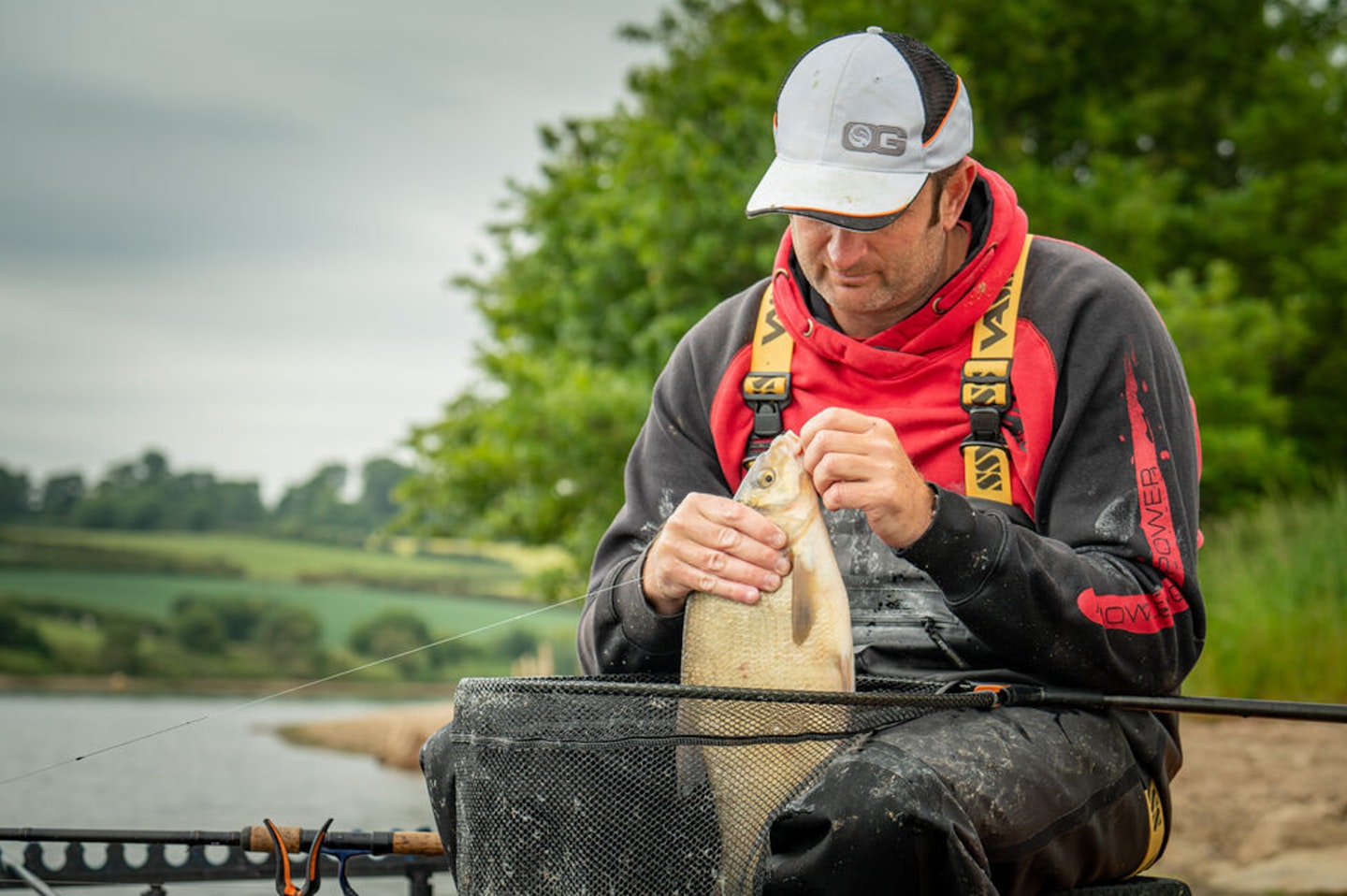Fishing the feeder isn’t like the pole or waggler, where you’re active throughout the day with casting and loosefeeding. Instead, you’ll be spending a lot of time sitting still, watching and waiting for the tip to be pulled round!
That means your fishing station should be as comfortable as you can make it, with everything you’re likely to need easy to get to and in the right place. This is especially the case in winter when bites might be at a premium and you don’t want to miss one.
Put simply, when the tip goes round, I want to be able to focus on what the fish is doing and not groping around trying tofind a landing net that’s out of reach or, worse still, miss a bite because I’m still trying to sort out my set-up out and not looking at the rod!
ALWAYS SELECT THE RIGHT FEEDER ROD FOR THE JOB WITH OUR EXPERT GUIDE
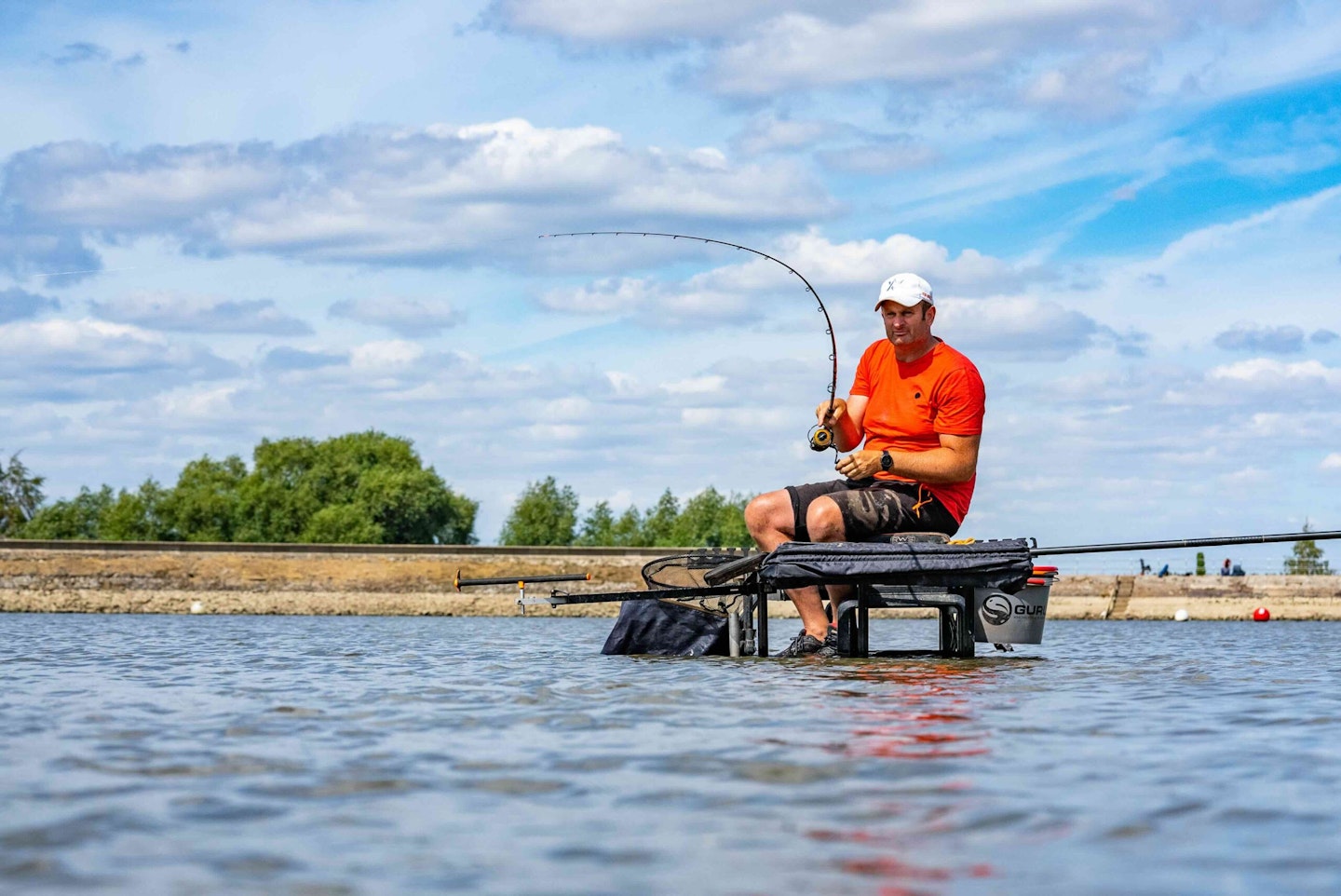
Position your box
Instead of sitting at a slight angle to one side, roughly in the same direction as the rod, I have the box facing out to the water as normal. This lets me fish the pole later in the day without having to move the box. It also allows me to keep an eye on the lake, looking for signs of fish moving.
HAVING THE RIGHT SEATBOX IS IMPORTANT TO FISH COMFORTABLY AND EFFECTIVELY.
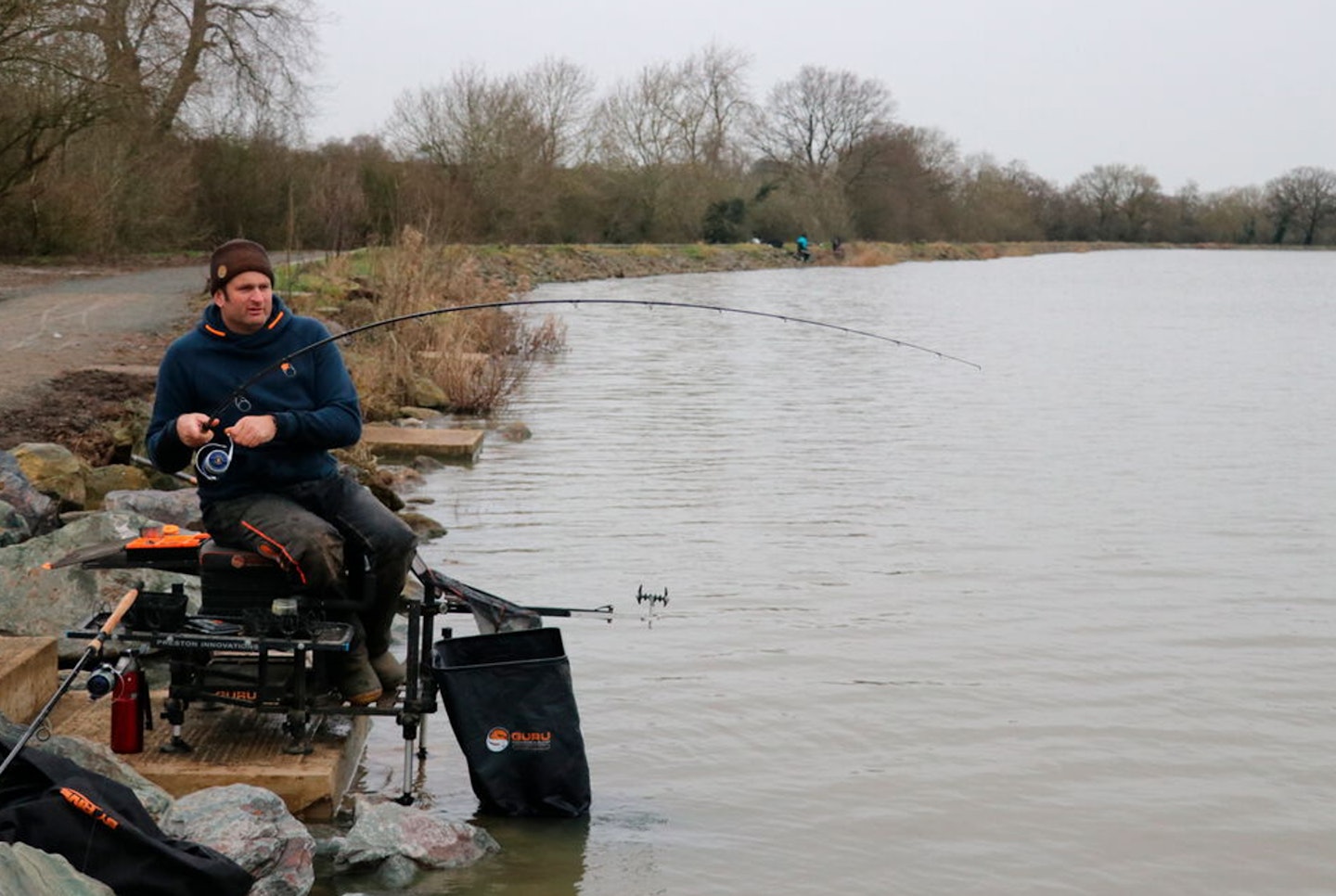
Use a feeder arm
How you angle the rod is down to personal choice, but I like to leave around a 45-degree angle, which will show up bites well, even from skimmers. My Feederland rest is rock-solid, although unusual in shape, and allows me to place the rod in multiple positions to get the perfect tension.
THE RIGHT SEATBOX ACCESSORIES WILL MAKE YOU FISHING MUCH MORE EFFICIENT.
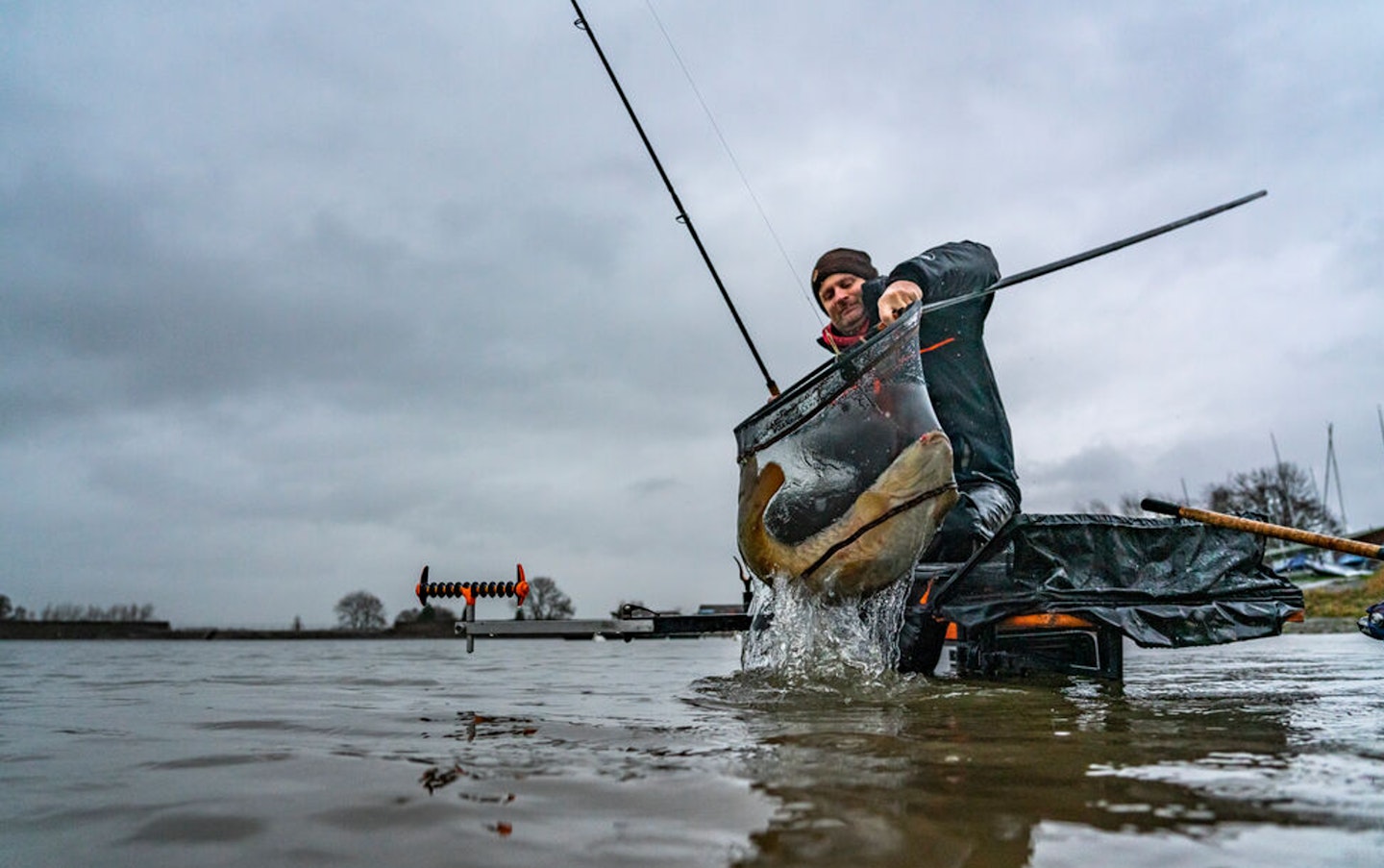
Secure your rod
Years ago, I’d have put the rod across my lap, but carp bites are savage and can pull the rod in. I use a Reaper back rest which grips the rod handle to prevent it being dislodged. My front rests are also Reapers, with a ridged version with blocked-off ends for carp and the smoother rest for silvers.
THE BEST CARP FEEDER RODS WILL DEAL WITH THOSE SAVAGE BITES FROM BIG COMMERCIAL CARP.
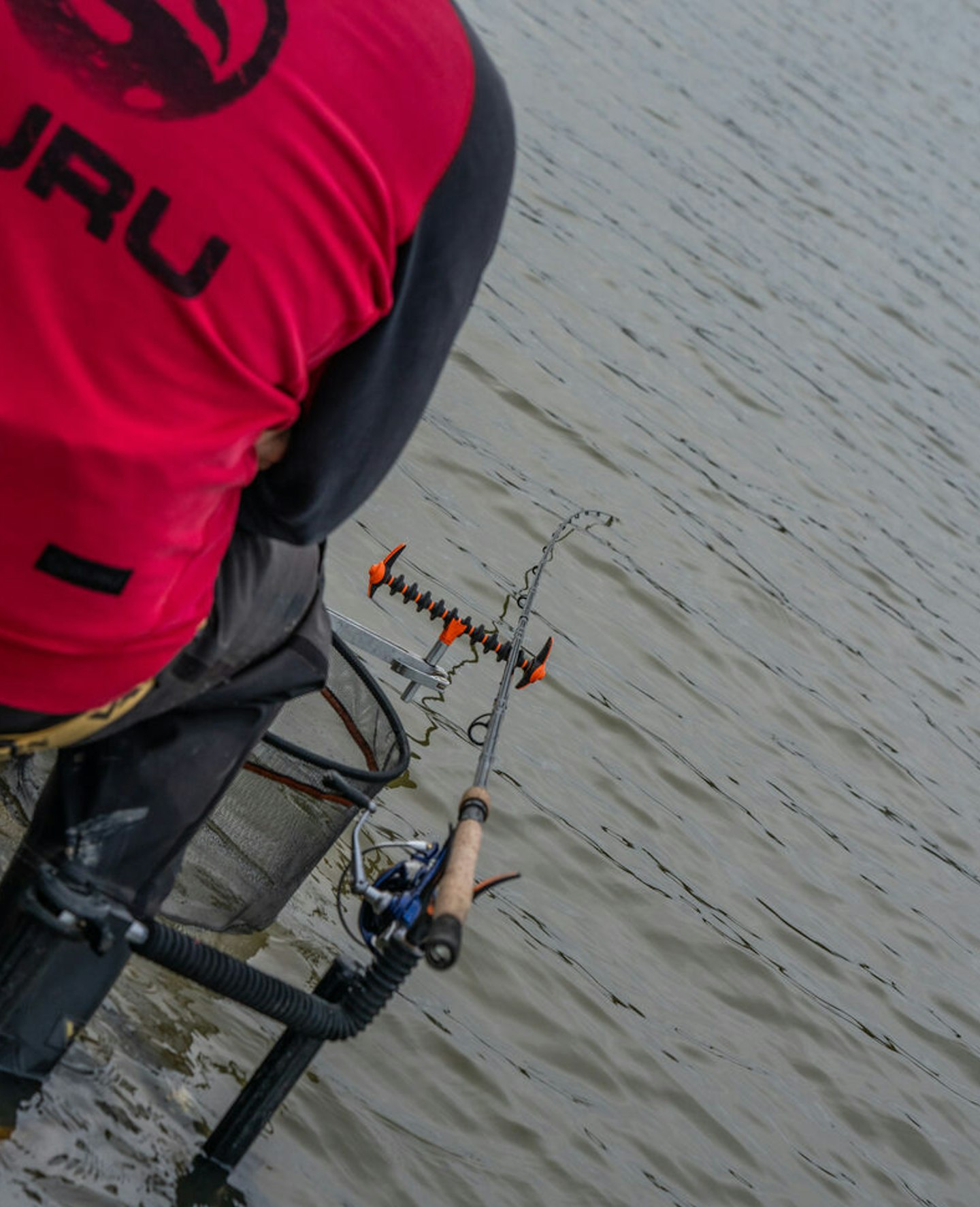
Have a net handy
I have my net sat with the head pointing out into the lake so I don’t have to swing it around when it’s netting time. This sits on a second Reaper back rest, keeping the net and handle off the ground away from damage, but still to hand. This means I can reach for it and keep an eye on the fish at all times.
YOU MIGHT NEED A PAIR OF FISHING WADERS TO GET YOUR SEATOX POSITIONED CORRECTLY.
